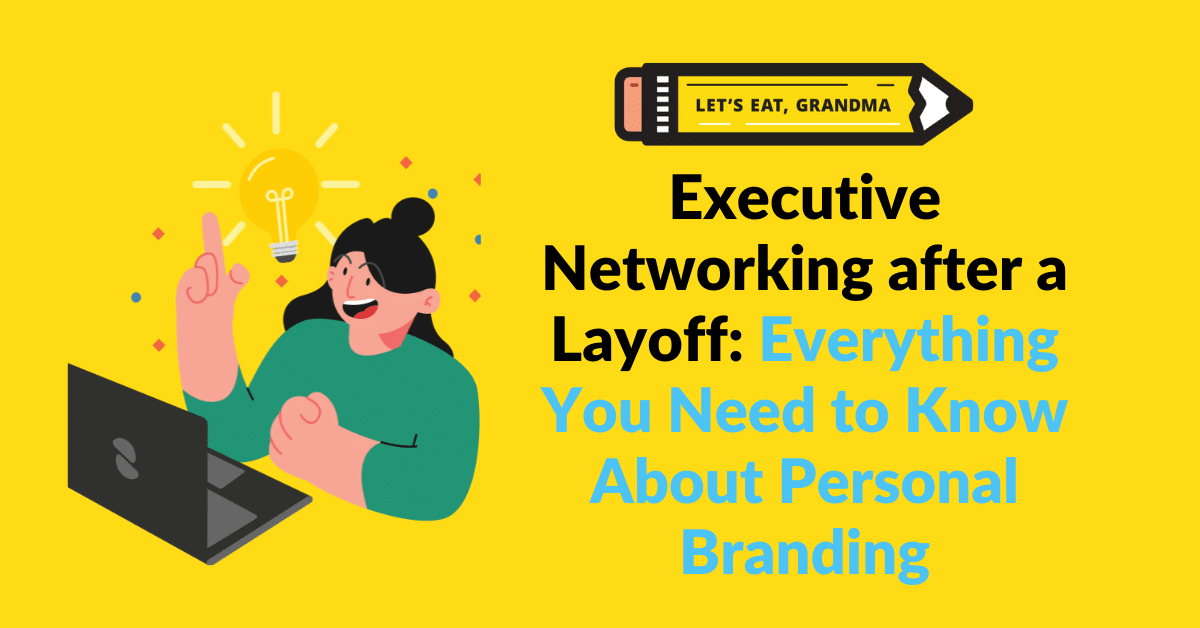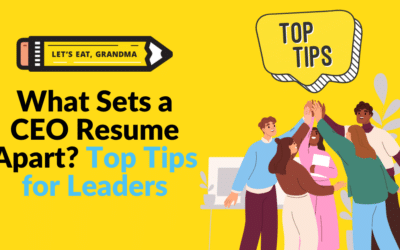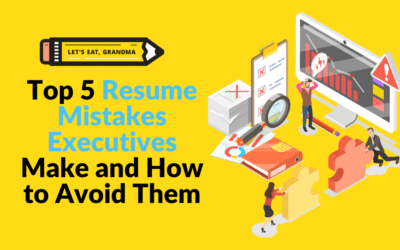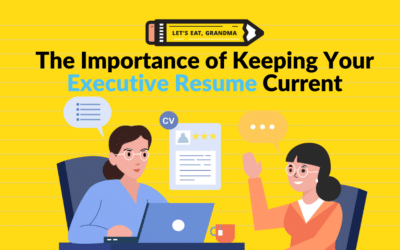Experiencing a layoff can be a challenging and disorienting time, especially for executives who are used to being in leadership positions. However, a layoff can also present an opportunity to reevaluate and strengthen your executive presence and personal branding, leveraging your extensive experience and network to land your next role.
Here’s everything you need to know about personal branding to optimize your executive networking after a layoff.

Photo by bruce mars on Unsplash
Our team of experts is dedicated to helping you stand out in a competitive job market and achieve your professional goals. Request a free resume critique today for honest feedback from a senior resume writer on your resume, and take the first step toward securing your dream job.
Understanding personal branding
Personal branding is the practice of marketing yourself and your career as a brand. It’s about how you present yourself to the world and how others perceive you.
For executives, personal branding is crucial as it can significantly influence your professional trajectory. It can be a game changer to look at your history and strengths from this perspective, as it allows you to distill your strengths into a focused personal statement. This will then help you find new opportunities, as you will be able to quickly hone in on companies and positions that align with your brand. A comprehensive understanding of your personal brand will also help you clearly and concisely communicate your strengths to potential employers.
That said, it’s not always an easy process to identify your own personal brand. It takes introspection, self-awareness, and focus to look at your career in this way. You must start from a willingness to perform deep and honest reflection on who you are, what you’re passionate about, and what you are capable of doing. This isn’t the time for holding back, or exaggerated thinking. It’s pretty easy to spot when someone is inauthentic with their personal branding – we’ve all seen LinkedIn posts or interviews with celebrities or influencers that look fake or “put-on.”
Executive personal branding after a layoff: Why is it important?
Experiencing a layoff can be a challenging and emotional time, but it also presents a unique opportunity to redefine and enhance your personal brand. Refining your executive personal branding after a layoff is crucial because it allows you to take control of your professional narrative and showcase your resilience, adaptability, and growth. By proactively managing your online presence, updating your resume, and engaging in industry conversations, you can position yourself as a strong candidate in the job market. This not only helps in attracting potential employers but also in building a network of contacts who can provide support and opportunities. In today’s competitive landscape, a well-crafted personal brand can be the key to turning a setback into a stepping stone toward new and exciting career prospects.
Navigating the aftermath of a layoff can be daunting, but by following these five steps, you can effectively develop and strengthen your personal brand to pave the way for new opportunities.

Photo by Microsoft 365 on Unsplash
Step 1: Reflect on your career
Start by reflecting on your career achievements, values, and goals. What are your core competencies? What makes you unique in your field? Understanding these elements will help you craft a compelling narrative around your personal brand.
Questions to consider:
- What are my top three career achievements?
- What are my core values and how have they influenced my career?
- What skills and experiences set me apart from others in my field?
Step 2: Update your online presence
In today’s digital age, your online presence is often the first impression you make. Ensure that your LinkedIn profile, personal website, and other professional social media platforms are up-to-date and reflect your personal brand.
Where to focus your online attention:
- LinkedIn Profile: Every executive should have a LinkedIn profile that is complete with a professional photo, an engaging headline, and a detailed summary that highlights your achievements and skills. However, your LinkedIn presence doesn’t stop with a fully completed profile. This is actually just the first step. To use LinkedIn to its full potential, you have to be an active participant in the platform. Share industry insights, comment on relevant posts, and engage with your network regularly to stay visible and relevant.
- Personal Website (Portfolio): If you don’t already have one, consider creating a personal website. It can serve as a portfolio showcasing your work, achievements, and thought leadership. A portfolio is especially important for executives in creative or technical fields. It can be useful if you have a lot of published works or projects that you’d like to feature, since you likely won’t have room to share all of them on your resume.
Step 3: Network with purpose
Networking is not just about reaching out to others but also about building and nurturing relationships. Approach networking with a genuine interest in others and a willingness to help.
Networking strategies:
- Reconnect with your network: Reach out to former colleagues, mentors, and industry contacts to let them know you’re exploring new opportunities. Be open about your situation and seek advice and support. This is where a history of activity on LinkedIn will come in handy – if you’ve already been reaching out and supporting your colleagues, they’ll be more likely to be receptive to your requests for assistance.
- Join professional groups: Participate in industry-specific groups and associations. Attend events, both virtual and in-person, to meet new contacts and stay updated on industry trends.
- Leverage alumni networks: Your alma mater can be a valuable resource, as it’s a ready-made group you are already qualified to join. Engage with alumni groups online and participate in in-person events to expand your network.

Photo by Christina @ wocintechchat.com on Unsplash
Step 4: Share your expertise
Have you ever considered becoming an influencer? It’s easier than you think to position yourself as a thought leader by sharing your expertise through various channels, especially LinkedIn. This not only reinforces your personal brand but also keeps you top of mind within your network. You don’t need to have thousands of followers or fancy infographics – just well-thought-out opinions and expertise that are universally interesting and helpful. High-value content goes a long way.
Ways to share your expertise:
- Write articles or blog posts: Share your insights on industry trends, leadership, and other relevant topics. Publish them on platforms like LinkedIn, Medium, or your personal website.
- Speak at events: Volunteer to speak at industry conferences, webinars, or panel discussions. Public speaking can enhance your visibility and credibility.
- Mentor others: Offer to mentor rising professionals in your field. It’s a great way to give back and stay connected to the industry.
Our team of experts is dedicated to helping you stand out in a competitive job market and achieve your professional goals. Request a free resume critique today for honest feedback from a senior resume writer on your resume, and take the first step toward securing your dream job.
Step 5: Maintain a positive mindset
A positive mindset is crucial during a layoff. Whether you knew it was coming, or it was a total surprise it’s normal to feel some amount of stress and unsteadiness. Stay focused on your goals, be patient with the process, and celebrate small victories along the way. This will not only help your personal well-being, it can affect your chances in the job search as well. Your attitude can significantly impact your personal brand and how others perceive you. No matter how bitter you are at the circumstances surrounding your layoff, it’s important to avoid disparaging your former company or colleagues online or in interviews. Negativity is never an attractive look, and it could even backfire and reflect badly on you and your reputation!
Tips for staying positive:
- Set Achievable Goals: Break down your job search into manageable tasks and set realistic goals.
- Seek Support: Surround yourself with supportive friends, family, and professional contacts who can offer encouragement and advice.
- Practice Self-Care: Take time for activities that rejuvenate you, whether it’s exercise, reading, or hobbies.
Conclusion
A layoff is not the end of your career but a new chapter with exciting opportunities. By focusing on personal branding and purposeful networking, you can navigate this transition with confidence and poise. Remember, your personal brand is a reflection of your unique experiences and strengths – leverage it to open doors to new possibilities.
Ready for more job search help?
Sign up for a free Senior Writer Resume Critique to see what’s holding you back from landing interviews. One of our top professional resume writers will give you personalized feedback on the top 3 items you can improve based on our expert practices!




